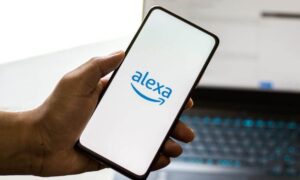The resolution of the high-profile legal dispute between Ripple Labs and the U.S. Securities and Exchange Commission (SEC) marks a pivotal moment for the cryptocurrency industry. After years of intense litigation, Ripple, along with its executives Brad Garlinghouse and Chris Larsen, reached an agreement with the SEC, closing a case that began in December 2020. The lawsuit, which accused Ripple of raising over $1.3 billion through unregistered XRP sales, had significant implications for the classification of digital assets. This settlement not only clears the path for Ripple but also sets a precedent for how regulators approach cryptocurrencies.
This development arrives amid growing scrutiny of the crypto sector, with the SEC intensifying its oversight of digital assets. The Ripple case, one of the most closely watched in the industry, has been a focal point for debates over whether tokens like XRP qualify as securities. The agreement, finalized in early 2025, underscores the complexities of applying traditional financial regulations to emerging technologies. Stakeholders across the crypto ecosystem are now analyzing the outcomes to gauge future regulatory approaches.
Key aspects of the settlement include:
- Resolution of all claims against Ripple Labs, Garlinghouse, and Larsen.
- Clarity on XRP’s legal status for institutional and public sales.
- Potential influence on ongoing SEC cases against other crypto firms.
- Ripple’s continued operations with a focus on global expansion.
The settlement has sparked discussions among investors, legal experts, and crypto enthusiasts, who see it as a turning point for Ripple and the broader blockchain industry. While the details of the agreement remain partially undisclosed, the resolution ends a contentious chapter for Ripple, allowing the company to shift its focus to innovation and market growth.
Legal journey reaches a close
The Ripple-SEC lawsuit, initiated in December 2020, centered on allegations that Ripple Labs conducted an unregistered securities offering by selling XRP, raising over $1.3 billion. The SEC argued that XRP sales to institutional investors violated securities laws, while Ripple maintained that XRP was a currency, not a security. The case gained widespread attention due to its potential to redefine how digital assets are regulated in the United States. Over the years, the lawsuit saw multiple twists, including partial victories for both sides, before culminating in the 2025 settlement.
In July 2023, U.S. District Judge Analisa Torres delivered a landmark ruling, stating that XRP sold on public exchanges did not constitute a security, a significant win for Ripple. However, the court found that institutional sales violated securities laws, leaving some claims unresolved. The SEC later dropped aiding-and-abetting charges against Garlinghouse and Larsen in October 2023, signaling a shift in the regulator’s strategy. These developments paved the way for negotiations that led to the final agreement.
The settlement, announced in early 2025, resolves all outstanding claims without Ripple admitting or denying the SEC’s allegations. The company agreed to comply with specific regulatory requirements, though exact terms, such as financial penalties, remain confidential. Legal experts note that the resolution avoids a prolonged appeal process, which could have delayed clarity for Ripple and the crypto industry.
Ripple’s strategic shift post-settlement
With the lawsuit behind it, Ripple Labs is poised to accelerate its business operations, particularly in international markets. The company, headquartered in San Francisco, has already expanded its presence in regions like Asia and Europe, where regulatory frameworks for cryptocurrencies are often more defined. Ripple’s core product, which facilitates cross-border payments using XRP, has gained traction among financial institutions seeking faster and cheaper alternatives to traditional systems.
The resolution allows Ripple to refocus resources previously tied up in legal battles. In a statement, CEO Brad Garlinghouse emphasized the company’s commitment to innovation, highlighting plans to enhance its payment solutions and explore new blockchain applications. The settlement also boosts investor confidence, as evidenced by a surge in XRP’s market price following the announcement.
Key areas of focus for Ripple moving forward include:
- Expanding partnerships with global banks and payment providers.
- Investing in blockchain technology for supply chain and trade finance.
- Strengthening compliance with evolving regulatory standards.
- Enhancing XRP’s utility in decentralized finance (DeFi) ecosystems.
The company’s ability to navigate the legal storm has positioned it as a leader in the crypto space, with analysts predicting increased adoption of its technology in the coming years.
XRP’s market response
The settlement news triggered immediate reactions in the cryptocurrency market, with XRP experiencing significant price volatility. On the day of the announcement, XRP surged by over 10%, reflecting investor optimism about Ripple’s future. Trading volumes spiked as retail and institutional investors re-evaluated the token’s potential in a clearer regulatory environment.
Historically, XRP’s price has been sensitive to developments in the SEC lawsuit. The 2023 ruling that XRP was not a security on public exchanges led to a 7% price jump, and subsequent dismissals of charges against Garlinghouse and Larsen further bolstered market sentiment. The 2025 settlement has reinforced these gains, with XRP trading at approximately $0.60, up from its 2024 average of $0.54.
Market analysts attribute the price increase to several factors:
- Reduced regulatory uncertainty surrounding XRP’s legal status.
- Renewed interest from institutional investors.
- Ripple’s plans for global expansion and product development.
Despite the positive momentum, some traders remain cautious, citing broader market trends and potential regulatory shifts. The crypto market’s volatility continues to influence XRP’s performance, but the settlement has undeniably strengthened its position.
Regulatory implications for crypto
The Ripple-SEC settlement carries broader implications for the cryptocurrency industry, which has faced increasing regulatory scrutiny. The SEC’s approach to Ripple set a precedent for how it pursues enforcement actions against other crypto firms, including major exchanges like Coinbase and Binance. The resolution highlights the challenges of applying decades-old securities laws to modern digital assets.
Legal experts argue that the settlement underscores the need for clearer regulations tailored to cryptocurrencies. The partial victory for Ripple in 2023, when XRP was deemed not a security on public exchanges, influenced other crypto companies to challenge SEC claims. The final agreement may encourage regulators to refine their approach, balancing investor protection with innovation.
The settlement also sheds light on the SEC’s evolving strategy. After facing criticism for its aggressive enforcement tactics, the agency appears to be prioritizing negotiated resolutions over prolonged litigation. This shift could lead to more settlements with other crypto firms, potentially stabilizing the industry.
Garlinghouse and Larsen’s role
Brad Garlinghouse and Chris Larsen, Ripple’s CEO and co-founder, respectively, were central figures in the lawsuit. The SEC initially accused them of personally profiting from unregistered XRP sales, totaling approximately $600 million. Both executives faced intense scrutiny but maintained their innocence, framing the lawsuit as an attack on the broader crypto industry.
The dismissal of aiding-and-abetting charges against them in 2023 was a significant milestone. Garlinghouse publicly criticized the SEC, accusing it of overreaching and stifling innovation. Larsen echoed these sentiments, calling for accountability within the regulatory agency. Their clearance in the 2025 settlement marks a personal and professional victory, allowing them to focus on Ripple’s growth.
Their leadership during the lawsuit earned praise from Ripple’s supporters, who viewed their defiance as a stand for the crypto sector. Garlinghouse’s strategic communication, including frequent updates on social media platforms, kept the XRP community engaged and informed throughout the legal battle.
Industry reactions to the settlement
The crypto industry has reacted with a mix of relief and optimism to the Ripple-SEC settlement. Blockchain companies, trade associations, and legal experts have weighed in, emphasizing the case’s significance. Many view the resolution as a step toward regulatory clarity, which has been a longstanding demand of the crypto sector.
Industry leaders from competing firms, such as Stellar and Cardano, acknowledged the settlement’s potential to influence future cases. Trade groups like the Blockchain Association hailed the outcome as a victory for innovation, urging policymakers to develop crypto-friendly regulations. Meanwhile, some critics argue that the settlement leaves unresolved questions about the classification of other digital assets.
Notable reactions include:
- Blockchain Association: “A milestone for the industry, but more work is needed for clear rules.”
- Crypto legal analysts: “The SEC’s retreat signals a shift in enforcement priorities.”
- Institutional investors: “Ripple’s resolution boosts confidence in XRP’s long-term viability.”
The settlement has also sparked discussions on social media platforms, with XRP supporters celebrating the outcome as a triumph over regulatory overreach.
Global context of crypto regulation
The Ripple case unfolded against a backdrop of varying global approaches to cryptocurrency regulation. While the U.S. has taken a stringent enforcement-driven stance, other regions have adopted more progressive frameworks. Countries like Singapore, Switzerland, and the United Arab Emirates have established clear guidelines for digital assets, attracting blockchain companies and investment.
Ripple’s significant international presence, with nearly 90% of its business outside the U.S., highlights the challenges of operating in a fragmented regulatory landscape. The settlement may prompt U.S. regulators to align more closely with global standards, especially as competition for blockchain innovation intensifies.
The case also underscores the importance of international cooperation in regulating cryptocurrencies. As cross-border transactions grow, regulators worldwide are exploring frameworks to address money laundering, tax evasion, and consumer protection without stifling innovation.
Ripple’s technological advancements
Beyond the legal battle, Ripple has continued to advance its blockchain technology. The XRP Ledger (XRPL), which underpins Ripple’s payment solutions, is known for its speed and low transaction costs. The company has developed new use cases for XRPL, including tokenized assets and decentralized finance applications, positioning it as a versatile platform.
In 2024, Ripple acquired Hidden Road, a financial services firm, for $1.25 billion to scale XRPL’s capabilities. This acquisition strengthened Ripple’s ability to serve institutional clients, such as hedge funds and asset managers, further integrating XRP into traditional finance. The settlement removes a major obstacle, enabling Ripple to pursue these initiatives more aggressively.
Recent XRPL developments include:
- Support for smart contracts to enhance DeFi applications.
- Integration with central bank digital currencies (CBDCs).
- Partnerships with over 300 financial institutions globally.
These advancements reinforce Ripple’s position as a leader in blockchain-based payments, despite the challenges posed by the SEC lawsuit.
Investor sentiment and market outlook
The settlement has reinvigorated investor interest in XRP, with many viewing it as a safer bet compared to other cryptocurrencies facing regulatory uncertainty. Hedge funds and retail investors alike are reassessing XRP’s potential, particularly as Ripple expands its partnerships and product offerings.
Market analysts predict that XRP could see sustained growth in 2025, driven by increased adoption and a more favorable regulatory environment. However, risks remain, including macroeconomic factors and competition from other blockchain networks. Ripple’s ability to capitalize on the settlement will depend on its execution of strategic initiatives.
Investors are particularly focused on:
- Ripple’s ability to secure new partnerships in Asia and Europe.
- The impact of potential U.S. regulatory reforms on XRP’s adoption.
- XRPL’s role in emerging DeFi and CBDC markets.
The settlement has undoubtedly bolstered XRP’s appeal, but its long-term success hinges on Ripple’s ability to navigate a dynamic market.
Legal precedents and future cases
The Ripple-SEC case has set several legal precedents that will shape future crypto litigation. The 2023 ruling that XRP is not a security on public exchanges has been cited in other cases, including those involving Coinbase and Binance. The settlement further clarifies the boundaries of SEC jurisdiction, particularly for tokens with utility in payment systems.
Legal scholars note that the case highlights the limitations of the Howey Test, a 1946 framework used to determine whether an asset is a security. Ripple’s counter-appeal, which questioned the test’s applicability to crypto, prompted discussions about modernizing securities laws. The settlement may accelerate these debates, potentially leading to new legislation.
The case also exposed tensions between the SEC and the crypto industry, with critics accusing the agency of inconsistent enforcement. The resolution may encourage the SEC to adopt a more collaborative approach, working with industry stakeholders to develop clear guidelines.
Ripple’s community engagement
Ripple has maintained strong ties with its community, known as the “XRP Army,” throughout the lawsuit. The company’s transparent communication, led by Garlinghouse and Larsen, fostered loyalty among supporters. Social media platforms, particularly X, became hubs for XRP enthusiasts to share updates and rally behind Ripple.
The settlement has energized this community, with posts on X celebrating the outcome and speculating about XRP’s future. Ripple’s Q1 2025 XRP Markets Report, released shortly after the settlement, highlighted key milestones, including the Hidden Road acquisition and the lawsuit’s resolution. These updates reinforced Ripple’s commitment to its supporters.
Community-driven initiatives, such as XRP meetups and developer conferences, have also grown, further solidifying Ripple’s grassroots support. This engagement will be crucial as Ripple seeks to expand XRP’s adoption globally.







